Like any other pests, cockroaches are drawn to three primary things – food, shelter, and water.
If you have a surplus of these in your home, and they are available to pests… then you can expect to have lots of roaches in your house.
While cockroaches do not directly harm us, they carry several dangerous pathogens and microbes that cause diseases in humans.
According to scientific studies, there are over 30 different species of bacteria that thrive on roaches.
Many things can kill roaches. Here we take a look at boric acid and how you can use it to kill cockroaches.
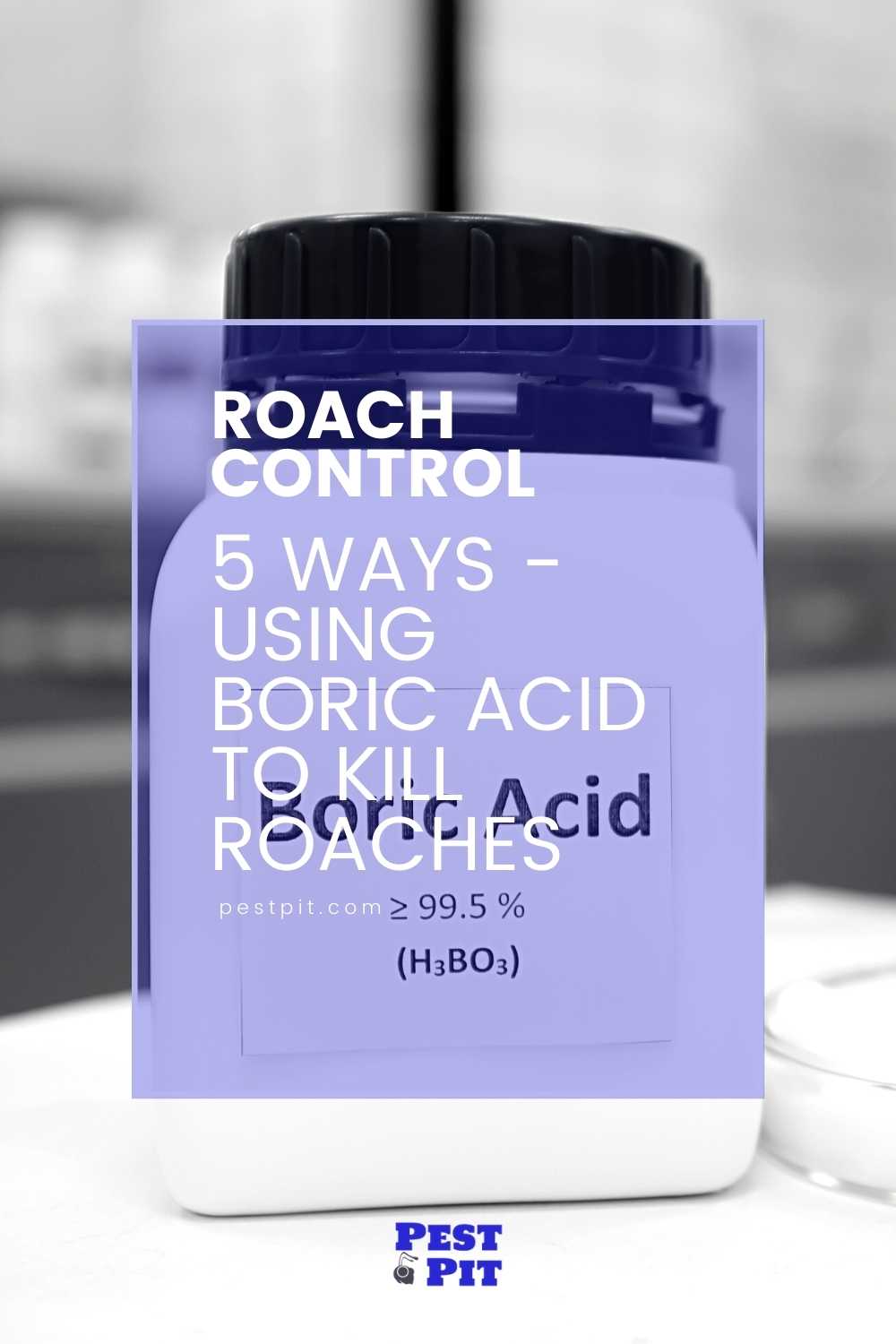
Can you use boric acid to kill roaches?
Yes, you can kill roaches with boric acid. But keep in mind that boric acid doesn’t kill them instantly like other chemical pesticides and insecticides.
Boric acid is a powder that is made by combining boron and water. Despite the name, it is not an acid but a natural compound present in the environment. Some food items such as apples, nuts, bananas, raisins, and almonds contain boron.
You can also find them in hand soaps, detergents, eyewash, and fertilizers. Although boric acid has several uses, it is mainly used as an insecticide to eliminate roaches and other insects.
Where can I buy boric acid?
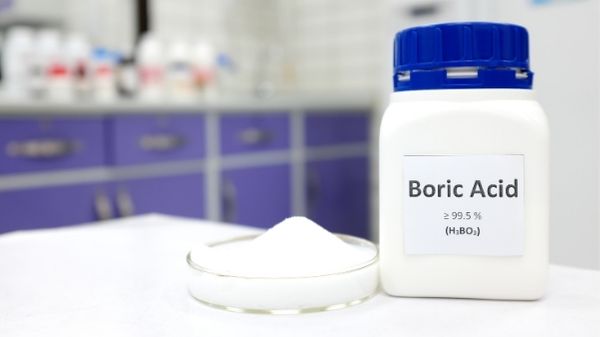
You can purchase boric acid from any local hardware shop or a grocery store. The mixture comes in a bottle, and you can use it straight out of the packet.
Most people worry about the harmful effect, but it does not contain harsh chemicals and is odor-free.
How does Boric acid kill roaches?
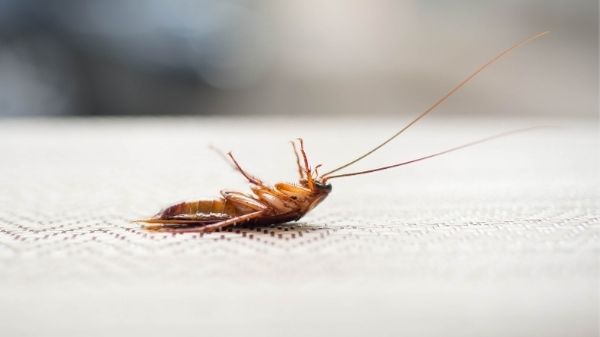
When you spray boric acid on the floor, the boric acid dust clings to the roaches’ body when they walk over it. Later on, when they clean themselves, they end up ingesting the insecticide. Other pests that are affected by boric acid are mice and ants.
You can use boric acid along with bait and traps. Often the roach takes the bait home and introduces it to the rest of the family.
When the entire cockroach clan consumes the boric acid-laden bait, they end up dead.
How effective is boric acid in killing roaches?
If used properly, boric acid can take out roaches effectively but not instantly.
You will begin to notice a significant decline in the number of roaches in your home after applying boric acid.
Sometimes cockroaches eat other dead roaches. And if a cockroach died due to the ingestion of boric acid and other roaches feast on its body, the boric acid will get into the other roaches, eventually killing all of them.
The domino effect that this technique creates makes it an effective remedy to get rid of cockroach infestations.
3 ways you can kill roaches with boric acid
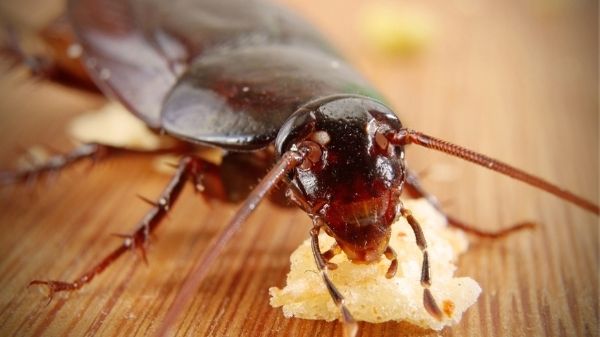
You can use boric acid in several ways to kill cockroaches. Here are some of the simple ways in which you can use this compound to get rid of roaches:
Spray the acid
The most direct way is to spray the boric acid in areas where roaches usually roam. The powder will get stuck to their body, and when they ingest it, the boric acid will kill them.
Make sure not to sprinkle too much and after a couple of days. Use a vacuum to clean up the powder to prevent a mess.
Mix sugar with boric acid
This one is pretty self-explanatory.
You make a mixture with equal parts of sugar and boric acid. Pour this mixture into a sprayer or squeezable bottle and spray it on areas where you have seen the roaches.
This is one of the easiest and most effective recipes to get rid of roaches. The cockroaches get attracted to the sugar and eat it along with the boric acid, killing them.
Baking Soda and boric acid
Baking soda is a cockroach killer as it is toxic for them. It causes a gas build-up in the digestive system and kills them.
Both these compounds are inexpensive and readily available and so combining them makes a potent insecticide.
Add bait to this mixture because it will attract more roaches.
How to make tasty roach baits with boric acid
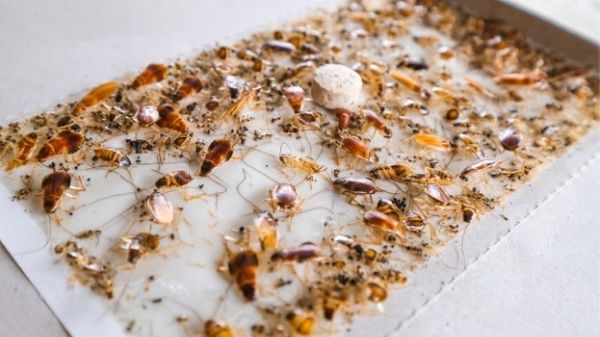
If you can add tasty baits to boric acid, roaches will swarm towards it. Cockroaches are drawn to every kind of food, so you won’t find it challenging to choose a bait that can lure them.
Here are some of the foods that they love the most –
- Peanut butter – add a spoonful of peanut butter in a bowl, sprinkle some boric acid on it, and leave it in the open overnight.
- Egg yolk – pour an egg yolk in a cup and lightly add some boric acid to it
- Cocoa powder – Sweet cocoa powder is something roaches can’t resist and mixes really well with boric acid
Is boric acid powder safe?

Compared to other harsh chemicals, boric acid is relatively safe unless ingested. However, it is still a poison and could pose a threat to adults, children, and pets.
Therefore apply boric acid mildly because if there is a generous amount of it, the roaches will avoid it, and if you inhale it, you may develop respiratory issues.
As for the toxicity of boric acid, you can expect minor symptoms such as skin irritations, but you might end up with respiratory distress or nausea if you expose yourself to a huge amount of it.
If you see any similar symptoms in yourself or your pets, you need to consult a doctor or vet.
Conclusion
Boric acid is a relatively safe (it is a poison though) and effective pest control method for treating roach infestation in and around your house. But make sure to apply it in the right way and the right amount, and you could be roach-free in no time!
Too much of it will kill its purpose and, in turn, might harm you and your family. Boric acid is in powdery form, so you need to apply it without creating a mess.
Cockroaches are great at hiding; they can slide into the narrowest and tightest spaces, cracks, and crevices, making it difficult to get a hold of them.
They like building nests in moist and secluded parts of a house, which is why you often see them in wall cracks, under sinks, around water heaters, in drains, cupboards, pantries, and behind appliances. These are all common hiding places and areas where you should set traps for roaches. If you store stacks of cardboard, or paper or have too much furniture, your house will be an apt place for them to build a nest.
If you are still unsure about applying it yourself, you can call a pest control professional who can take care of it.

